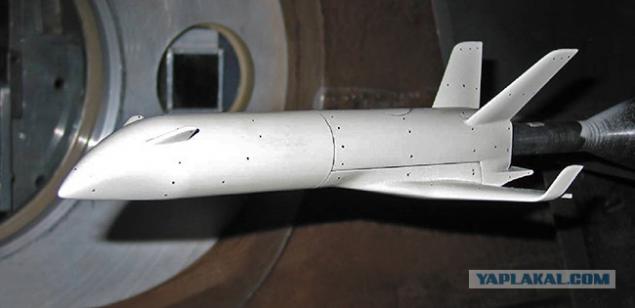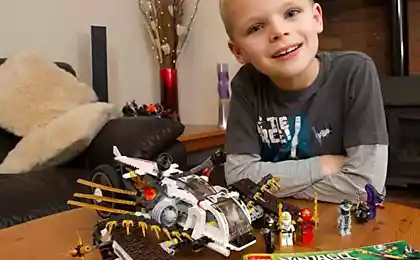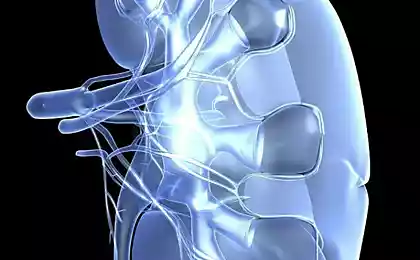311
Return the lost
In Central Aerohydrodynamic Institute. prof. NE Zhukovsky, the first phase of comprehensive research of reusable launch vehicles (MRKN). TsAGI specialists formed a promising proposals to improve the system into orbit, developed by Khrunichev MV Khrunichev in cooperation with more than twenty enterprises of the aerospace industry.

It is planned that the new family MRKN ensure removal of payloads weighing from 20 to 60 tons borderless fall of the first stage, which is a qualitatively new step in the domestic rocket.
Experimental studies were carried out at the Department of Research aerothermodynamics hypersonic vehicles and objects of space engineering. The subsonic and hypersonic wind tunnels carried weight and thermal tests, during which revealed major issues aerothermodynamics.
Experimental studies on the return rocket block landing modes revealed a number of critical features, after an analysis of which scientists TsAGI gave important recommendations to further improve the aerodynamic configuration.
Another important part of the research was the work of another department - the aerodynamics of power plants. Experts analyzed the different layout of the power plant unit returned with three bypass turbojet engines, evaluated the features of the input and output devices, as well as their performance at subsonic flight. As a result, it was selected the most rational variants of the input device of the two variants of the return rocket block, as well as recommendations for changing the shape of the internal channel.
"In general, the work done includes extensive materials research, offer a real scientific and technical feasibility of a short term qualitatively new reusable launch vehicle with winged first stage unit. Already in 2016 we are planning the continuation of development work in this direction ", - said Andrei Shustov, head of the department of strategic planning, system studies and long-term development of aerospace technology TsAGI.

In Russia, work is being done on several reusable space system. However, it is clear that the most promising will be the so-called aerospace system. Ideally, the spacecraft will have to take off from the airfield as an ordinary plane to go into orbit and return back, spending a fuel. However - this is the most difficult option, which requires a large amount of technical solutions and preliminary studies. Quickly, this option can not be implemented by any modern state. Although Russia and there is a fairly large scientific and technical groundwork for projects of this kind. For example, "aerospace plane" TU-2000, which had a fairly detailed study. Implementation of this project at the time prevented the lack of funding after the collapse of the Soviet Union in the 1990s, and the lack of a number of critical and complex components.
There is also an intermediate option, where the space system consists of a reusable spacecraft and reusable booster stage also. Work on such systems were in the USSR, for example, the system of "Spiral". There are much more recent developments. But this scheme reusable space system presupposes the existence of a sufficiently long cycle of design and research works on many fronts.
Therefore, the focus of the program is focused on Russia MRCA-1. This program stands for "reusable space-rocket system 1 stage." Despite this "first step", the new system will be very functional. Just big enough within the general program on the creation of new space-based systems, the program has the closest deadlines final realization.
chpok
Vsepropalschiki FAS

Source:

It is planned that the new family MRKN ensure removal of payloads weighing from 20 to 60 tons borderless fall of the first stage, which is a qualitatively new step in the domestic rocket.
Experimental studies were carried out at the Department of Research aerothermodynamics hypersonic vehicles and objects of space engineering. The subsonic and hypersonic wind tunnels carried weight and thermal tests, during which revealed major issues aerothermodynamics.
Experimental studies on the return rocket block landing modes revealed a number of critical features, after an analysis of which scientists TsAGI gave important recommendations to further improve the aerodynamic configuration.
Another important part of the research was the work of another department - the aerodynamics of power plants. Experts analyzed the different layout of the power plant unit returned with three bypass turbojet engines, evaluated the features of the input and output devices, as well as their performance at subsonic flight. As a result, it was selected the most rational variants of the input device of the two variants of the return rocket block, as well as recommendations for changing the shape of the internal channel.
"In general, the work done includes extensive materials research, offer a real scientific and technical feasibility of a short term qualitatively new reusable launch vehicle with winged first stage unit. Already in 2016 we are planning the continuation of development work in this direction ", - said Andrei Shustov, head of the department of strategic planning, system studies and long-term development of aerospace technology TsAGI.

In Russia, work is being done on several reusable space system. However, it is clear that the most promising will be the so-called aerospace system. Ideally, the spacecraft will have to take off from the airfield as an ordinary plane to go into orbit and return back, spending a fuel. However - this is the most difficult option, which requires a large amount of technical solutions and preliminary studies. Quickly, this option can not be implemented by any modern state. Although Russia and there is a fairly large scientific and technical groundwork for projects of this kind. For example, "aerospace plane" TU-2000, which had a fairly detailed study. Implementation of this project at the time prevented the lack of funding after the collapse of the Soviet Union in the 1990s, and the lack of a number of critical and complex components.
There is also an intermediate option, where the space system consists of a reusable spacecraft and reusable booster stage also. Work on such systems were in the USSR, for example, the system of "Spiral". There are much more recent developments. But this scheme reusable space system presupposes the existence of a sufficiently long cycle of design and research works on many fronts.
Therefore, the focus of the program is focused on Russia MRCA-1. This program stands for "reusable space-rocket system 1 stage." Despite this "first step", the new system will be very functional. Just big enough within the general program on the creation of new space-based systems, the program has the closest deadlines final realization.
chpok
Vsepropalschiki FAS

Source:























